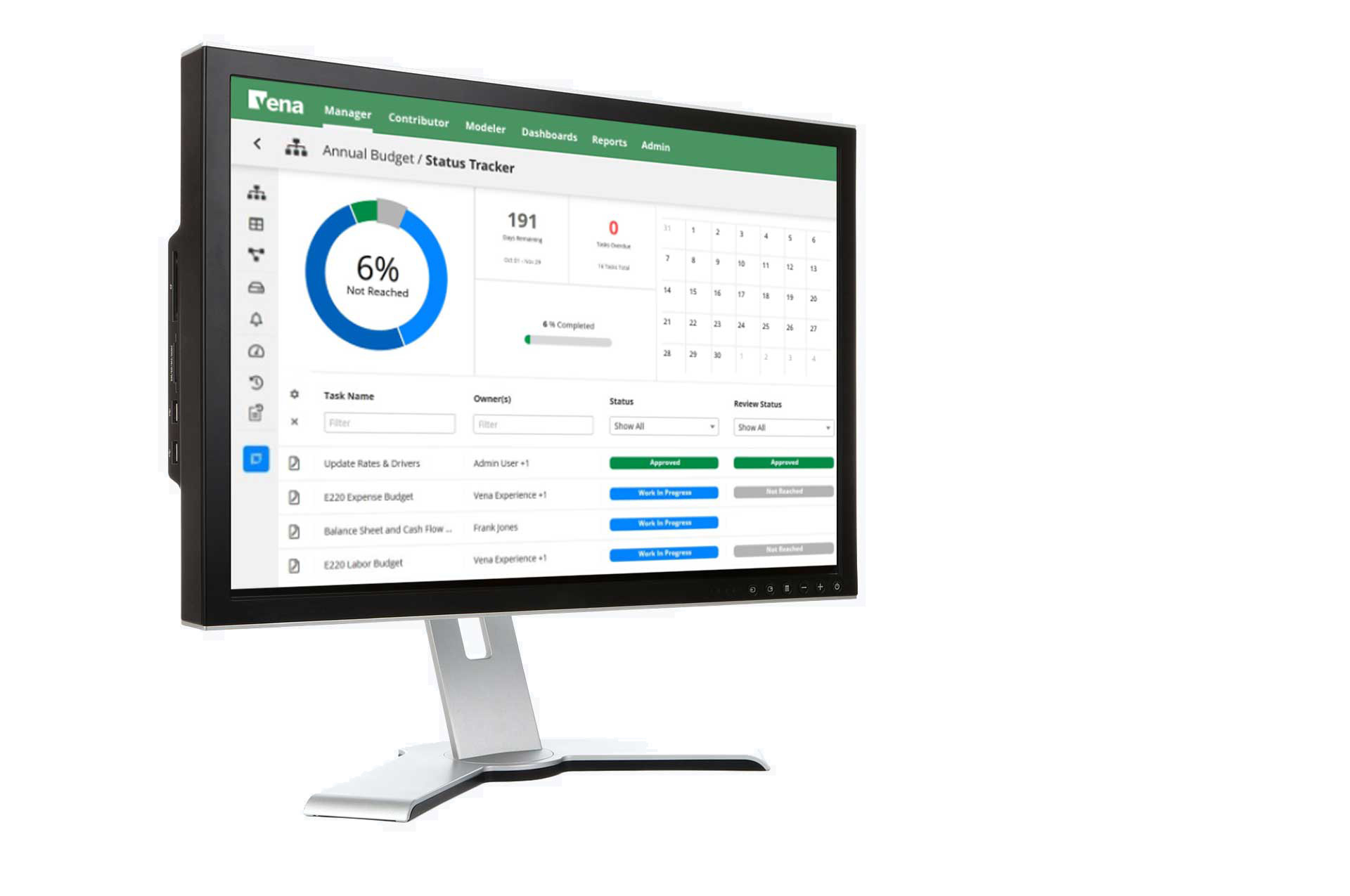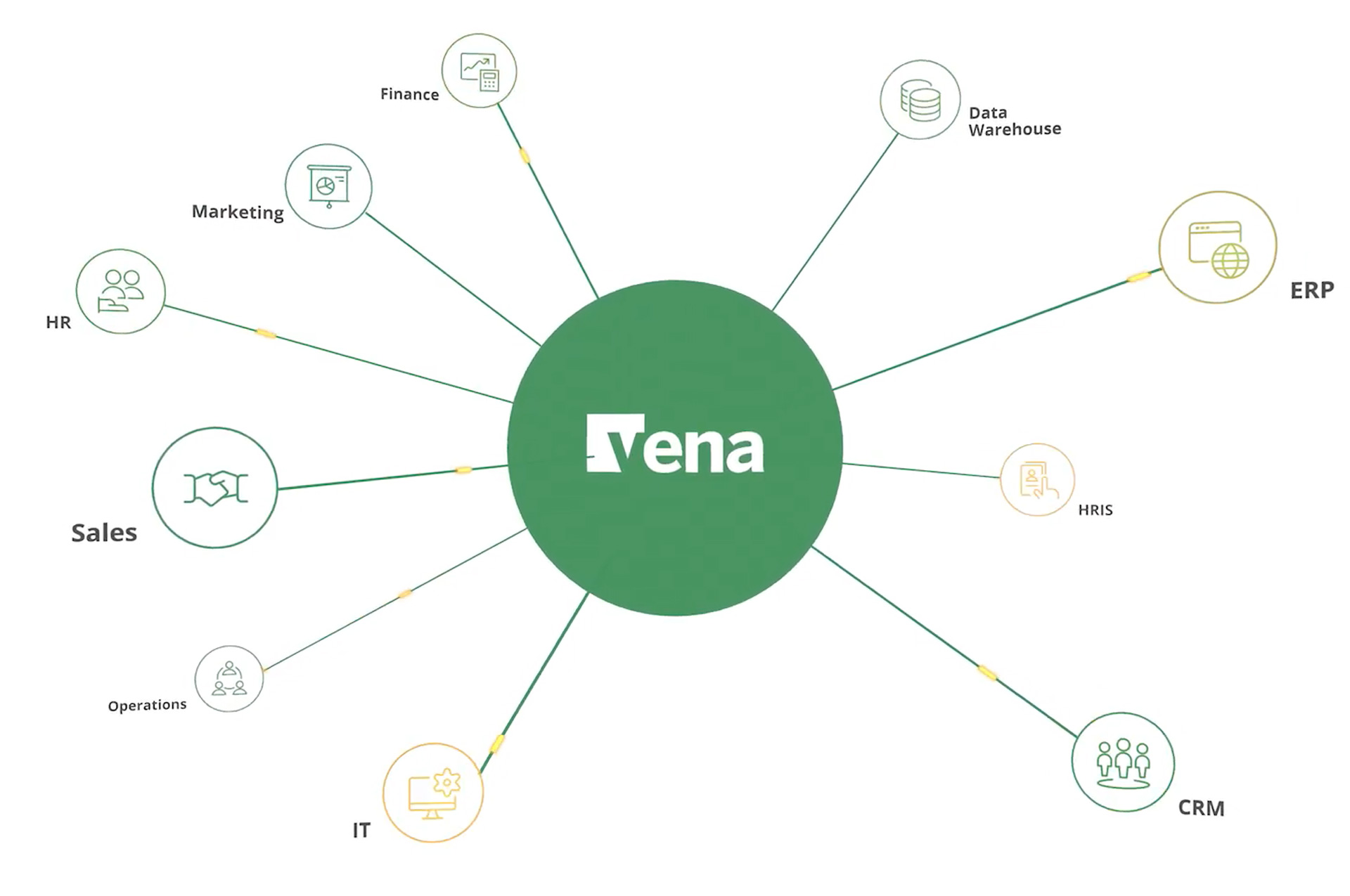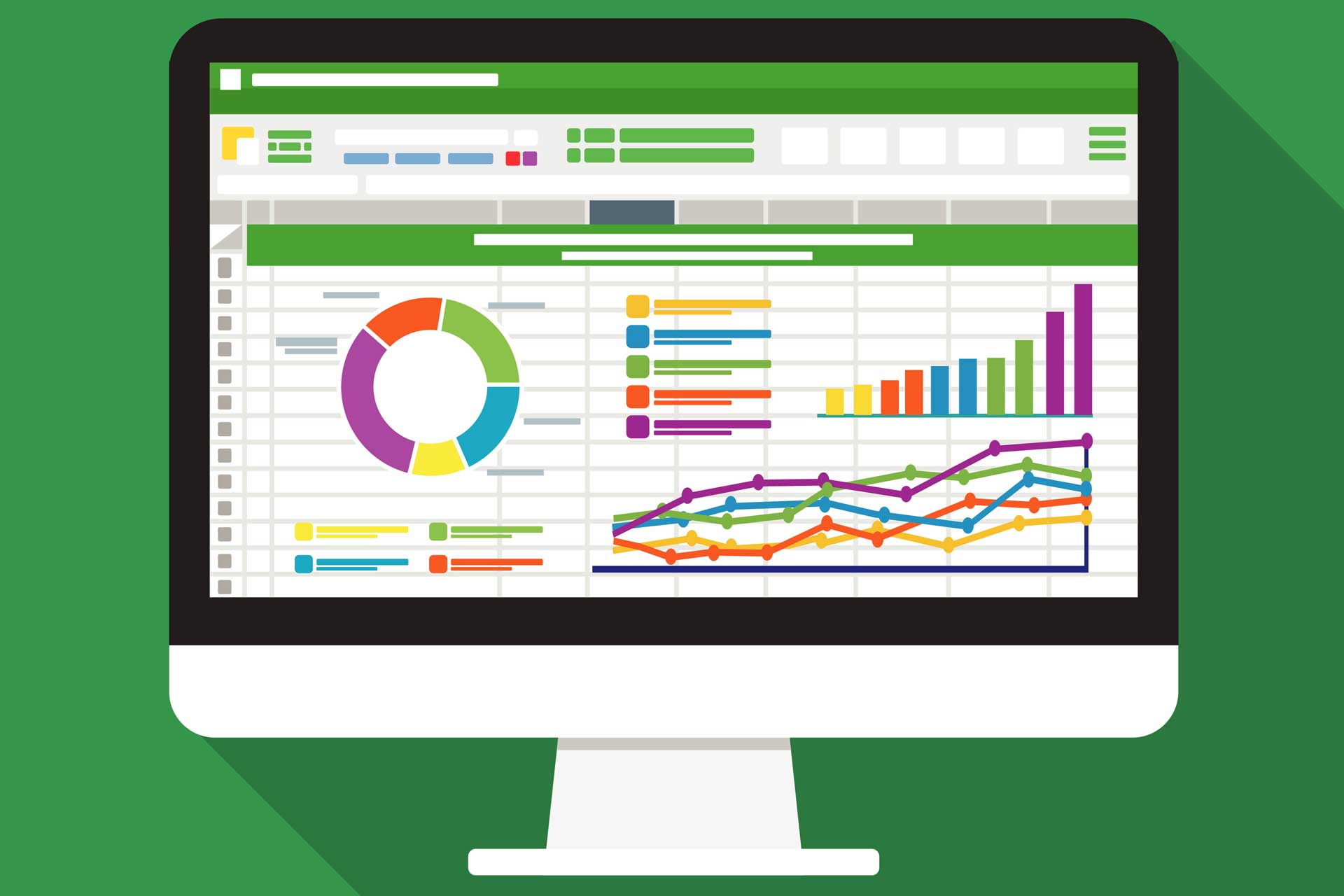From Excel to Integrated Business Planning Software
In today's fast-paced commercial world, making informed decisions is crucial for success. Excel has long been the go-to tool for companies to manage their data, budgets, and forecasts. However, as companies grow and their needs become more complex, Excel's limitations become more apparent.
That's where integrated business planning software comes in. By making the switch from Excel to a more robust system, companies can streamline their processes, gain valuable insights, and take their planning to the next level.
But where do you start? In this article, we'll explore the benefits of integrated business planning and provide tips on how to make a smooth transition.
- The Challenges of Using Excel as Your Company Grows
- What Is Integrated Business Planning?
- Benefits of Using a Dedicated IBP Application
- Key Features To Consider
- How to Choose the Right Solution for Your Business
- Making the Switch from Excel
- Best Practices for Implementation
- Measuring the Impact of Making the Upgrade
- Conclusion
Whether you're a small company owner or a CFO of a large corporation, this guide will help you make the switch for better results.
The Challenges of Using Excel as your Company Grows
Excel is a powerful tool that can provide any company with a lot of flexibility when it comes to managing data.
However, Excel is fundamentally a personal productivity tool. It was designed for this purpose and does it so well that, in the Finance Department and beyond, it is used to plan and analyse just about every company process that you can imagine.
But this flexibility can also mean that it is often used in ways for which it was never intended, and Excel definitely has some limitations when it comes to plans, budgets, and forecasts. Some of the biggest challenges of using Excel are that it can be time-consuming, error-prone, and a drain on existing resources.

When organisations rely on spreadsheets for plans, they often end up with multiple versions of the same document, which can cause confusion and lead to mistakes. Additionally, Excel lacks the collaboration features that are necessary for teams to work together effectively.
Another limitation of Excel is that it can only handle a limited amount of data. When companies start to grow and their data becomes more complex, Excel can become overwhelmed, leading to slow performance and crashes.
These limitations lead to version control and data integrity issues at this stage and inevitably require complex and time-consuming manual aggregations and data-cleansing routines, leading to greater costs, delays and increased demands on everyone’s time which could be better used elsewhere.
Finally, Excel does not provide the level of insights and analytics that companies need to make informed decisions. It does not have the ability to create advanced scenarios or provide real-time data insights.
What Is Integrated Business Planning?
A dedicated application that provides a more robust solution for companies which need to manage their data, budgets, and forecasts. It combines data from various sources, such as financial statements, sales forecasts, and inventory levels, into a single system.
By providing an Excel plug-in as a minimum, users are able to work in an connected environment via an interface that they are already very familiar with. And some, such as Vena Solutions, offer native access to Excel so that you can easily convert your existing spreadsheets into a fully functioning FP&A solution.
This now means that whenever a spreadsheet is altered, the changes automatically apply across your entire dataset for all stakeholders, solving data integrity and version control issues at a stroke. Vena becomes the single point of the truth while still enabling users to work straight from Excel.
Companies consequently have a holistic view of their operations and make more informed decisions.
Benefits of Using a Dedicated IBP Application
There are many benefits to using a dedicated application over Excel. One of the biggest benefits is that it provides companies with a single source of truth.
When all data is stored in a single system, companies can be sure that they are working with accurate and up-to-date information. This can help to reduce errors and improve decision-making. Additional benefits include:
- Balance sheets, profit & loss statements, cash flow statements, budgets, plans, and forecasts all update automatically based on your new inputs.
- Stakeholders and administrators are instantly notified of the changes, which they can then review and approve following a full audit trail function which enables them to see who changed what, together with any comments highlighting why the changes were made.

This type of application will also provide companies with a range of tools and features that are designed to increase efficiency. For example, it can automate routine tasks, such as data entry and report generation, freeing up time for more strategic work.
Additionally, it can provide real-time insights into company financial performance, allowing faster decisions based on the most up-to-date information.
Another benefit is that it provides companies with collaboration features that are necessary for teams to work together effectively. It allows teams to share data, collaborate on reports, and create workflows. Again, this can help to improve communication and reduce the risk of errors.
Key Features to Consider
An IBP application provides a range of features that are designed to help companies manage their data, budgets, and forecasts. Some key features include:
- Data integration: Integrates data from various sources, such as financial statements, sales forecasts, and inventory levels, into a single system.
- Scenario planning: Allows businesses to create advanced scenarios to help them understand the impact of different variables on their operations.
- Workflow automation: Users can automate routine tasks, such as data entry and report generation, freeing up time for more strategic work.
- Collaboration: Provides collaboration features that allow teams to share data, collaborate on reports, and create workflows.
- Real-time data insights: Delivers real-time insights into company performance, allowing stakeholders to make quick decisions based on the most up-to-date information.
Systems such as Vena Solutions also provide an ever-growing list of connectors which enable you to interface with and integrate all of your source systems. This means that you don’t have to create additional analytical spreadsheets in order to get the detail.

The data in the connected system is fully accessible from your Vena user interface (your familiar spreadsheet). Simply click on the number in Excel you’re interested in to drill-down to greater detail and obtain the context that you need for better and more productive analysis.
How to Choose the Right Solution for Your Business
Choosing the right solution for your business can be a daunting task. There are many factors to consider, including the size of your company, your budget, and your specific needs.
InfoCat have worked with these applications for 30 years and have extensive knowledge of this market. We can help and advise on the best solution for you as part of our support services. Here are some of our top tips to help you choose the right solution for your company:

- Identify your needs: Before you start looking for any application, it's important to identify your specific needs. Consider factors such as the size of your company, the complexity of your data, and your reporting requirements.
- Research your options: Once you have identified your needs, research your options. Look at the features of the different solutions available and compare them to your requirements.
- Consider your budget: Applications of this type can be expensive, so it's important to consider your budget. Look for solutions that offer a good balance between price and features.
- Read reviews: Before you make a decision, read reviews from other businesses that have been through the process themselves. This can help you to get a better understanding of the strengths and weaknesses of different solutions.
Making the Switch from Excel
Making the switch from Excel can seem to be a complex task. However, using a combination of modern applications coupled with the right approach, can actually make for a very smooth transition. Here are three tips to help you make the switch:
- Plan your transition: Before you start the transition, it's important to plan it carefully. Identify the data that you need to transfer, the processes that you need to change, and the training that your team will need.
- Train your team: Your chosen application may be more complex than Excel, or at the very best unfamiliar, so it's important to train your team on how to use it effectively. This can help to reduce the learning curve and improve adoption.
- Start small: When making the switch, it's important to start small. Choose a pilot project or a small team to test everything before rolling it out to the entire organisation.
- Monitor progress: Finally, it's important to monitor progress and measure the impact on your organisation. This can help you to identify areas for improvement and ensure that you are getting the most out of your new solution.
User adoption is very important in any new system. It can make all the difference for a successful implementation. Switching to a solution which uses Excel as its prime user interface can make a lot of sense, as existing Excel users (nearly everyone!), will be instantly comfortable with it.
Best Practices for Implementation

Implementing any new application can be a complex process. Here are some best practices to help you ensure a successful implementation:
- Get buy-in from stakeholders: Before implementing the application, it's important to get buy-in from stakeholders. This can help to ensure that everyone is on board with the change and that there is a shared understanding of the benefits.
- Set realistic goals: It's important to set realistic goals for the implementation. This can help to ensure that everyone is working towards the same objectives and that there is a clear path to success.
- Focus on data quality: Data quality is crucial when it comes to understanding the performance of your company. It's important to ensure that your data is accurate and up-to-date to get the most out of it.
- Provide ongoing support: Finally, it's important to provide ongoing support to your team. This can include training, troubleshooting, and ongoing maintenance of the application.
The InfoCat team has vast experience in implementation and can support you through the entire process. Get in touch if you’d like us to manage the whole process for you.
Measuring the Impact of Making the Upgrade

Measuring the impact of your new application is crucial to ensuring that you are getting the most out of it. Here are some key metrics that you can use to measure the impact:
- Time saved: Automation of routine tasks, will free-up easily measurable time for more strategic work.
- Accuracy: A reduction in errors will ensure that you are working with accurate data.
- Collaboration: Improved collaboration between teams, leading to better communication and fewer errors.
- Insights: Gain real-time insights into company performance, allowing you to make quick decisions based on the most up-to-date information.
The additional capabilities enabled by a centralised database system should represent a significant time and cost-saving over the previous time-consuming processes required by a pure spreadsheet-based system, so it’s worth taking the time to measure.
Conclusion
In today's fast-paced corporate world, making informed decisions is crucial for success. Excel has long been the go-to tool for companies to manage their data, budgets, and forecasts. However, as companies grow and their needs become more complex, Excel's limitations become more apparent.
By making the switch from Excel to a dedicated application, companies can streamline their processes, gain valuable insights, and take their planning to the next level.
When evaluating your options, it's important to consider your specific needs, budget, and requirements.
With the right approach, making the switch can be a smooth transition. And getting the critical decision on application choice correct will result in faster implementations, wider user adoption, and greater overall productivity and flexibility leading to better results for your company.





